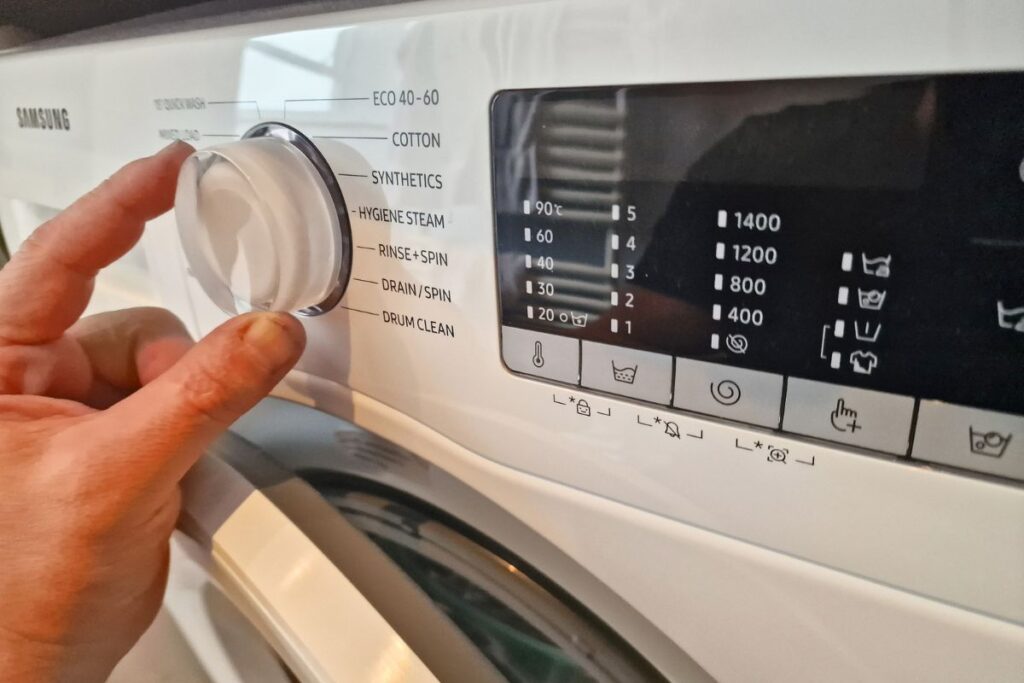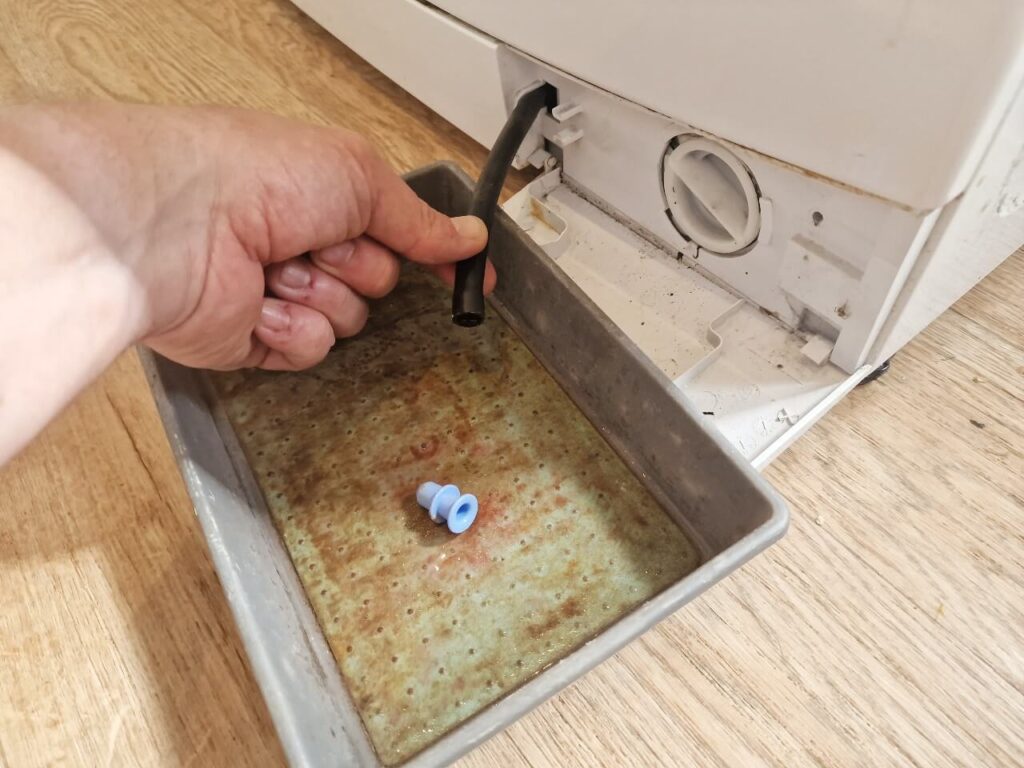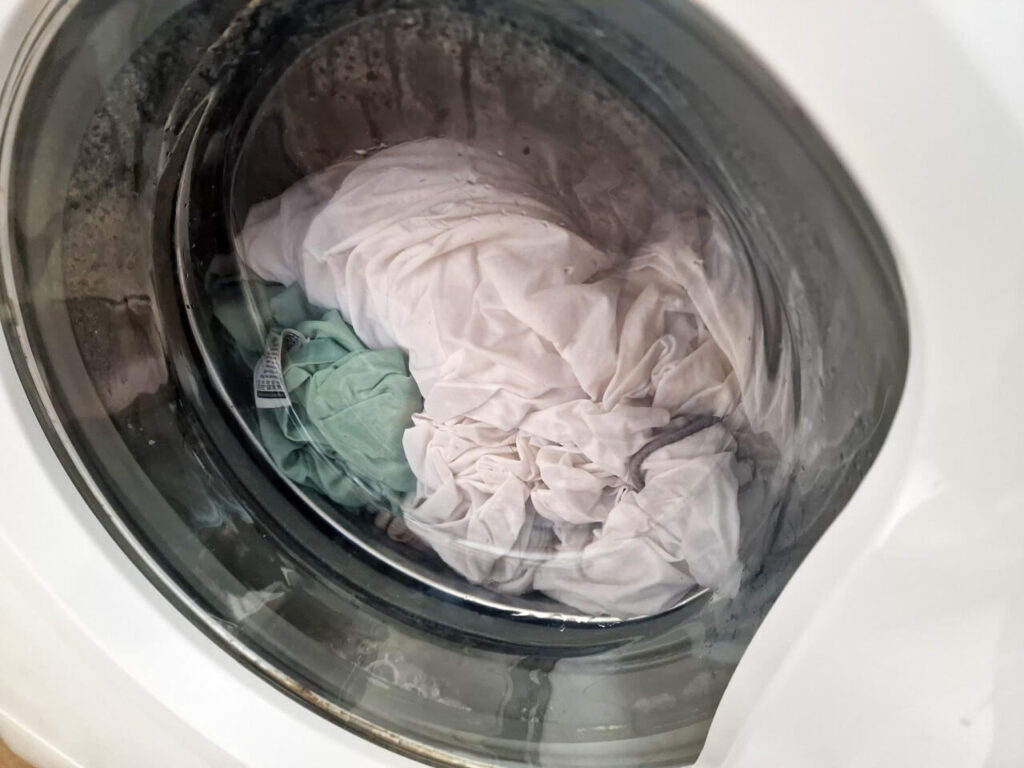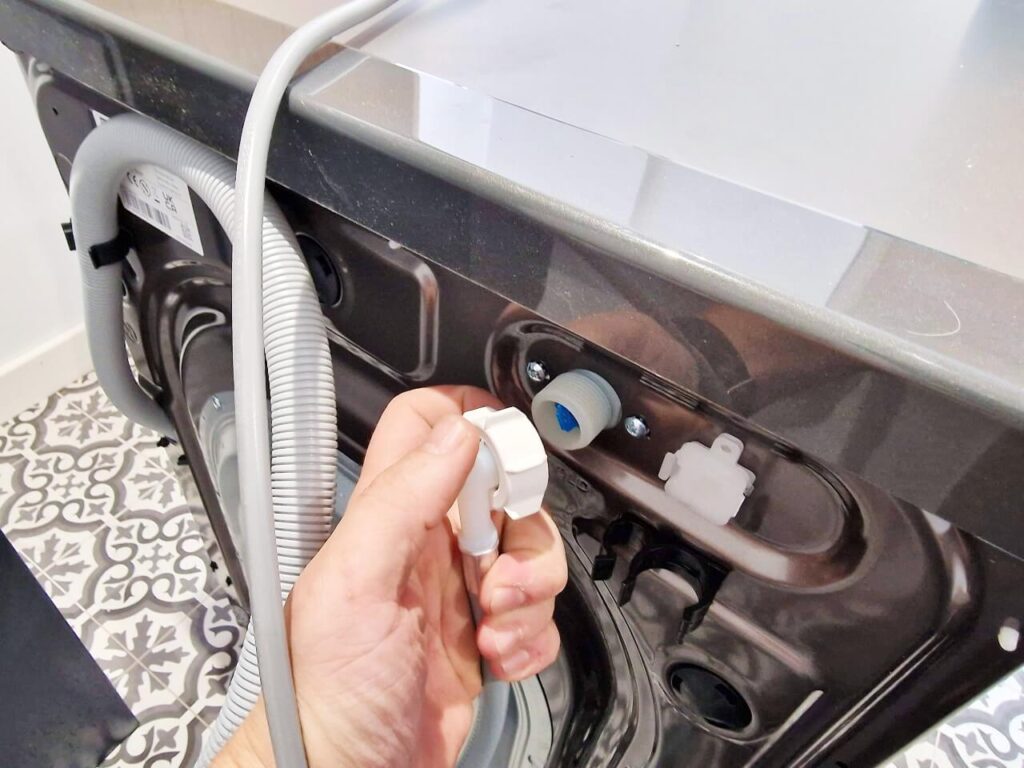Last updated on April 12th, 2024
Your washing machine is a trusty household appliance that works tirelessly to keep your clothes clean and fresh.
But did you know that it also needs some TLC to maintain its efficiency and prevent unpleasant odours and smelly washing machine problems?
Regular washing machine cleaning not only extends its lifespan but also ensures that your laundry comes out smelling and feeling great every time.
I have been a full-time plumber for over a decade and fixing and plumbing in washing machines is very common for me.
In this blog post, I’ll share the ten best washing machine cleaning hacks that are simple, effective, and use household items you probably already have.
Washing Machine Cleaning Hacks
Washing machines can last for decades and regularly do. But, I have removed washing machines many times when they wouldn’t have needed to be replaced if they were looked after properly.
Knowing how to clean a washing machine can save it from being scrapped too early.
Here are the ten best hacks I’ve came up with based on my experiences and research over the years:
Washing Machine Cleaning with Vinegar
White or distilled vinegar is a magical cleaning agent with natural antibacterial and deodorising properties:
- Pour two cups of the vinegar into the detergent dispenser or directly into the drum.
- Set your machine to run on its hottest water setting and the largest load capacity, and let the cycle run without any laundry.
- The vinegar will dissolve soap scum, mineral deposits, and kill bacteria, leaving your machine fresh and clean.
It’s an eco-friendly alternative to harsh chemicals and is safe for most washing machine models. Additionally, vinegar is known for its ability to soften fabrics, so it’s beneficial for those with hard water.
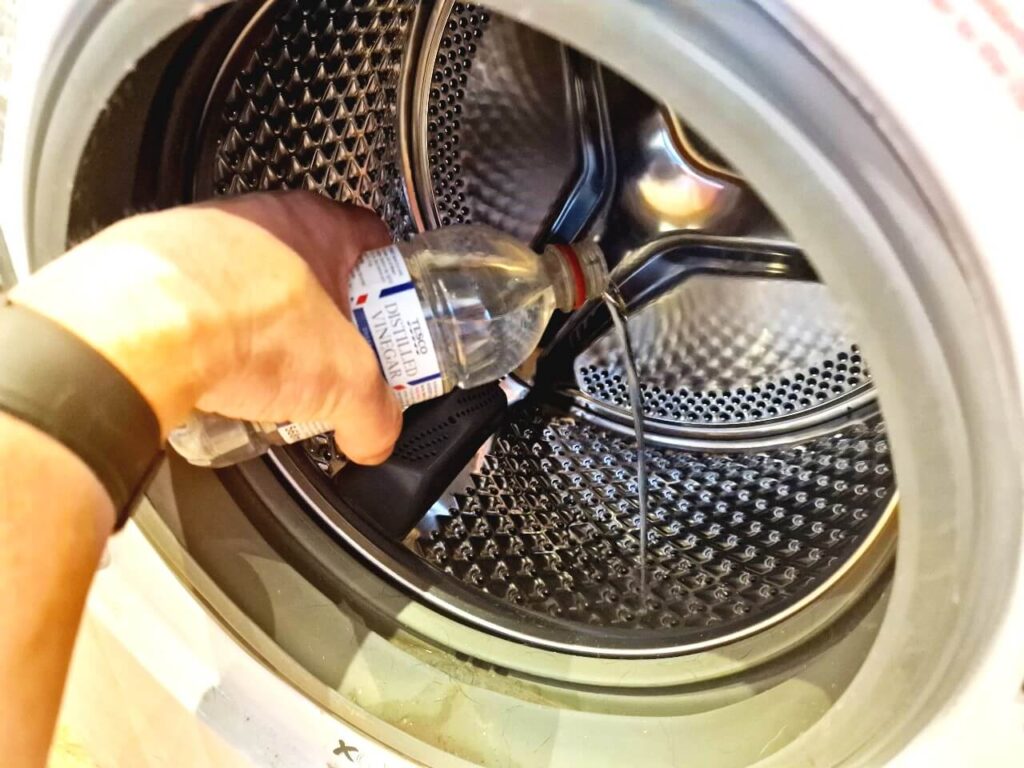
Cleaning Washing Machine With Baking Soda
If you’re dealing with stubborn stains, mildew, or lingering odours in your washing machine, baking soda, also known as bicarbonate of soda, is your best friend.
Add half a cup of baking soda directly into the drum before starting the hot water cycle.
Baking soda’s gentle abrasiveness will scrub away residue, and its natural deodorizing properties will banish bad smells, leaving your washing machine and laundry smelling fresh.
The combination of white vinegar and baking soda can create a fizzing effect, helping to dislodge grime and dirt from hard-to-reach areas. This dynamic duo is non-toxic and gentle on your washing machine’s components.
Clean the Dispenser Drawer
Over time, detergent, fabric softener, and bleach can build up in the drawer, leading to clogs and funky odours. Remove the drawer from your washing machine and soak them in warm, soapy water.
Use an old toothbrush to scrub away any stubborn residue. After a thorough cleaning, reinstall the drawer for a smooth laundry experience.
You can also periodically rinse the drawer with white vinegar to eliminate any lingering odours and keep them functioning optimally.
Clean drawers ensure the right amount of detergent and softener is used in each cycle, leading to better cleaning results and potential cost savings.
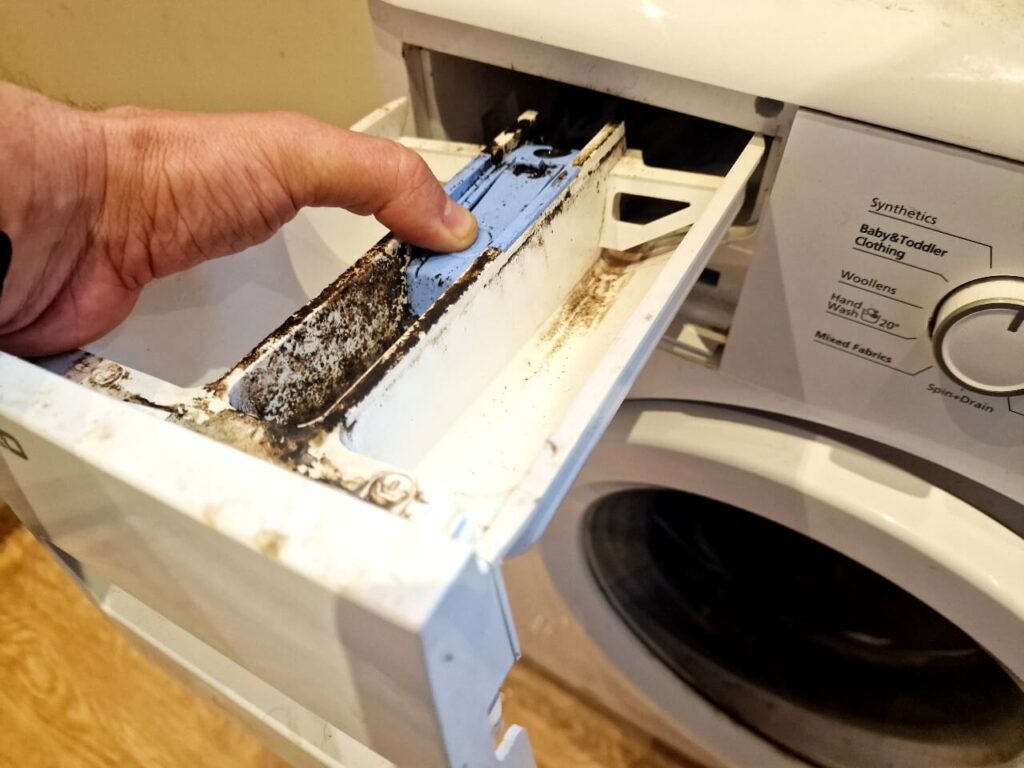
Cleaning Washing Machine Door Seal
The rubber door seal, or gasket, is a common place for mould and mildew to thrive.
Regularly check this area and clean it using a mixture of equal parts water and vinegar. Be sure to get into all the nooks and crannies.
If you notice severe mould buildup that doesn’t go away with cleaning, consider replacing the gasket to maintain a hygienic washing machine.
A clean door seal prevents mould spores from transferring to your laundry, keeping it fresh and free from musty odours.
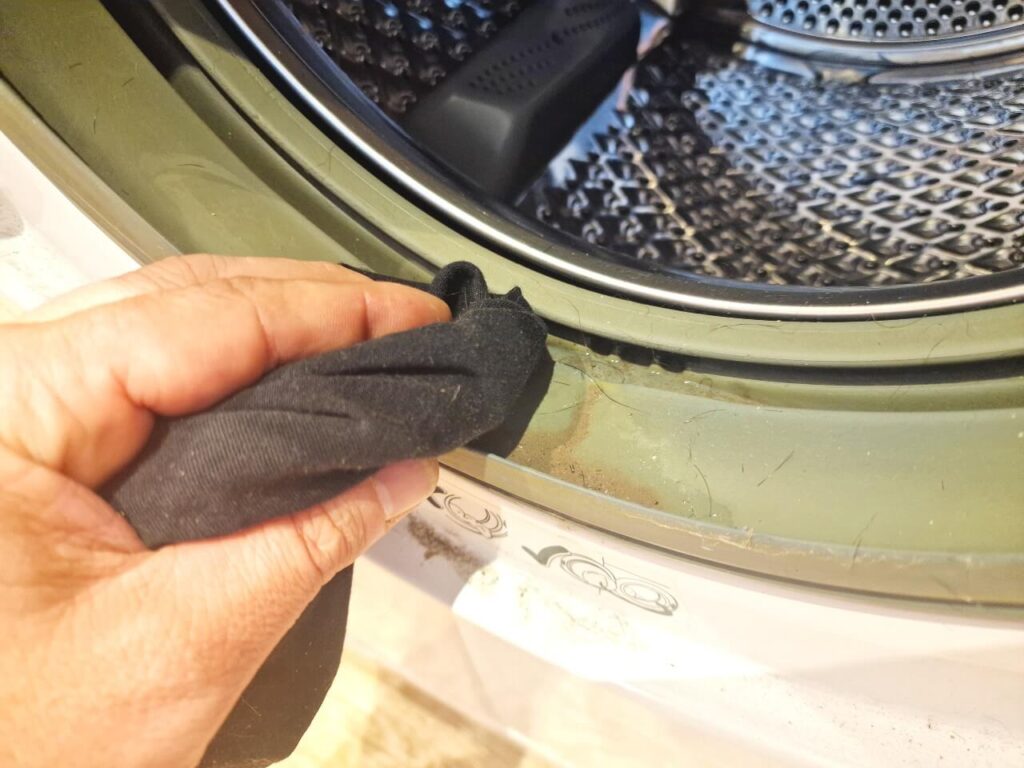
Tackle the Filter
Some washing machines have a filter, typically located at the bottom of the machine. Lint, debris, and small objects can accumulate here and hinder your machine’s performance.
Check your washing machine’s manual to locate the filter and clean it regularly. A clean filter ensures proper drainage and prevents clogs.
Cleaning a washing machine filter is a quick and easy task that can improve it’s efficiency and prevent a potential washing machine not draining.
Make it a habit to check and clean the filter every few months for optimal results.
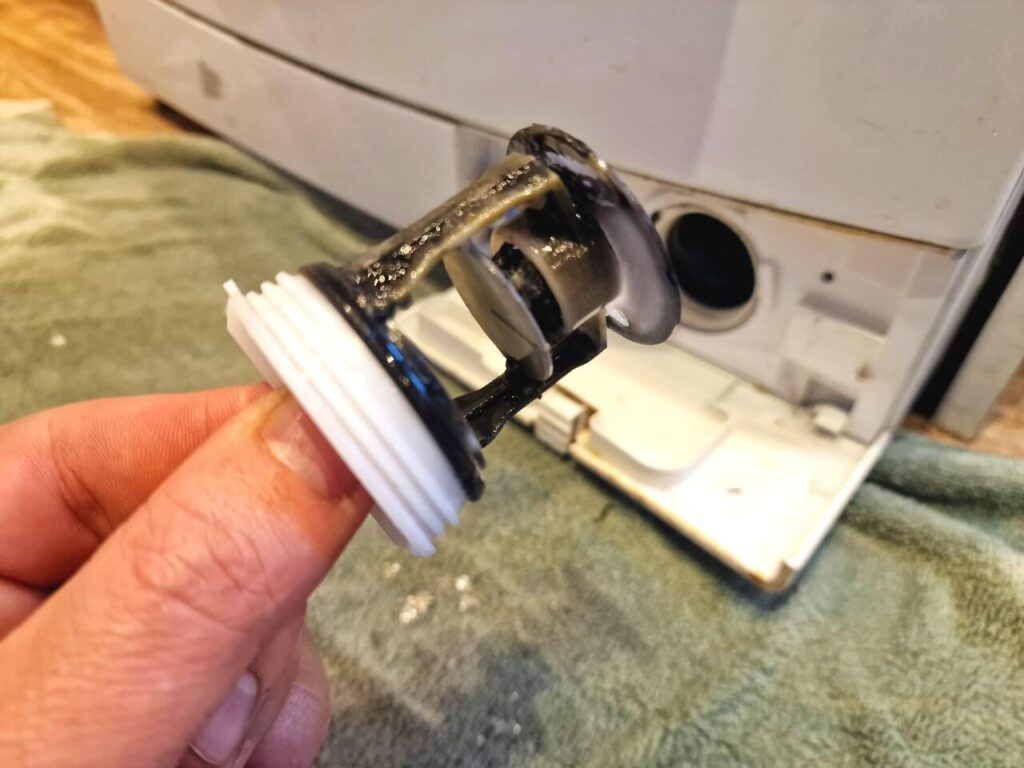
Lemon Freshness
If you prefer a citrusy aroma in your laundry, try using lemon juice for washing machine cleaning. Squeeze the juice of one lemon into the detergent dispenser drawer or directly into the drum, then run a hot water cycle.
Lemon juice not only cleans and deodorizes but also helps to remove stains and brighten whites. The natural acidity of lemon acts as a mild bleaching agent, making it ideal for brightening up whites and combating discolouration on clothes.
Additionally, the refreshing scent of lemons will leave your laundry with a delightful fragrance.

Wipe Down the Exterior
Cleaning the exterior of your washing machine is just as important as the interior. Use a damp microfiber cloth and mild detergent to wipe down the control panel, knobs, and other surfaces.
Avoid using abrasive cleaners that may damage the finish. A clean exterior not only looks appealing but also prevents dirt from transferring onto your freshly washed clothes.
Regularly wiping down the exterior also helps to identify any visible signs of wear or damage, enabling you to address potential issues before they escalate.
Vinegar and Baking Soda Combo
For an extra powerful cleaning punch, combine the cleaning forces of vinegar and baking soda for the best way to clean a washing machine.
Start with the vinegar cycle as described earlier, and then add half a cup of baking soda to the drum.
Run another hot water cycle to unleash the dynamic duo’s cleaning prowess, leaving your washing machine sparkling clean and smelling delightful.
The combination of vinegar’s acidity and baking soda’s alkalinity creates a natural foaming action that can effectively dislodge grime and stubborn stains.
This hack is particularly useful if your washing machine has been neglected for some time and needs a deep cleaning boost.
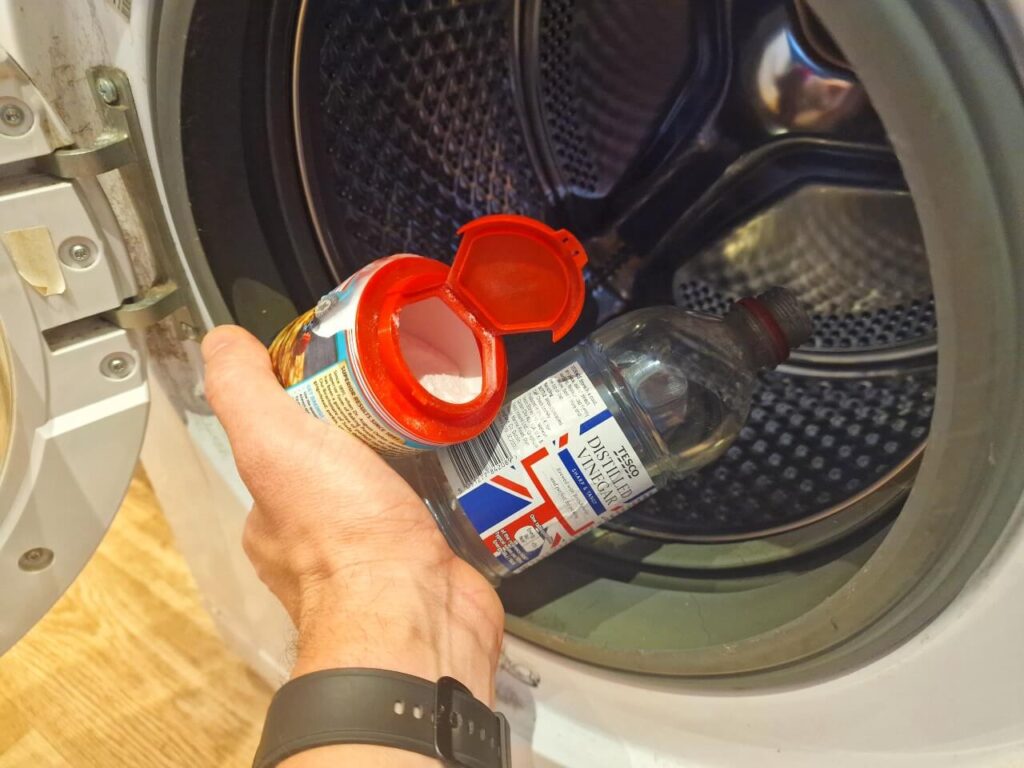
Regular Cleaning Schedule
Consistency is key when it comes to washing machine maintenance. Create a cleaning schedule that suits your laundry needs and stick to it.
Cleaning your machine every two to three months is a good rule of thumb, but adjust the frequency based on your machine’s usage and the hardness of your water.
If you have hard water, you may need to clean your washing machine more frequently to prevent mineral buildup and limescale.
Regular cleaning keeps your washing machine in top shape and ensures that your laundry is always fresh and free from unpleasant odours.
Leave the Door Open
After each washing machine use, leave the washing machine door slightly open to allow air to circulate. This simple practice helps prevent mould and mildew growth, helping get a fresh and odour-free washing machine for your next load.
The moisture from wet clothes can create an ideal environment for mould and mildew to thrive, especially in dark and damp areas like the drum.
Leaving the door open allows the interior to dry out, reducing the risk of mould and mildew growth. Additionally, keeping the door open helps prevent any musty odours from transferring to your freshly washed laundry.
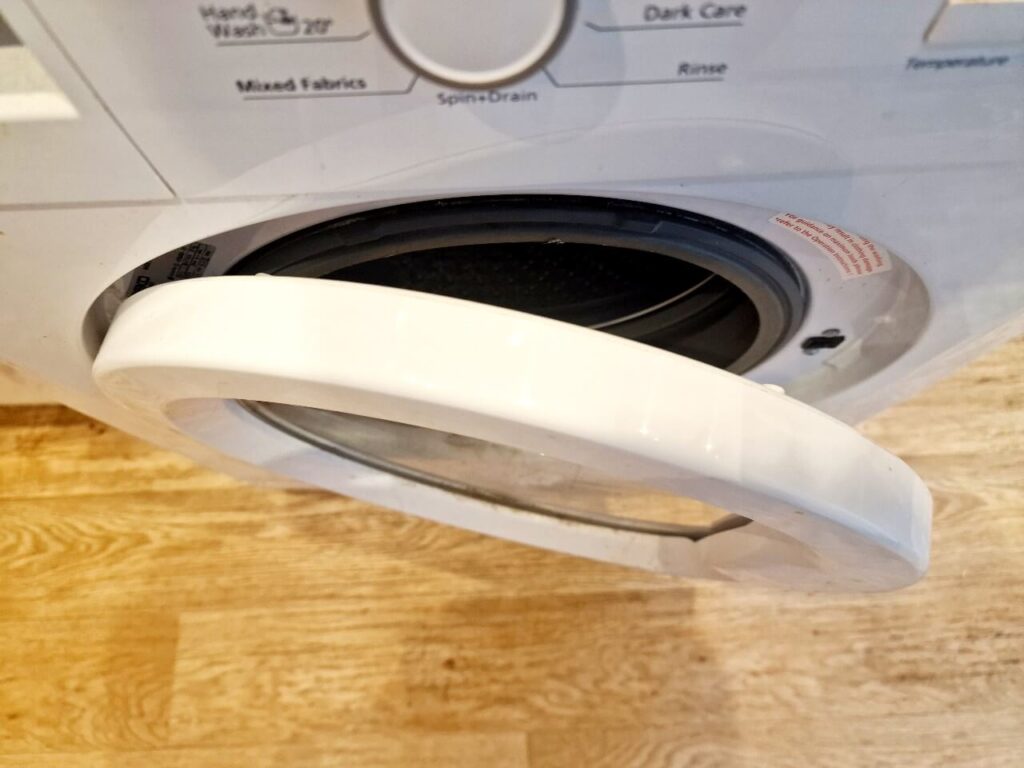
Best Washing Machine Cleaner
The best washing machine cleaner for me is distilled (white) vinegar. It is very cheap to buy (currently 29p in Tesco), and does a great job.
Washing machine cleaning with vinegar is underrated and has been used for other household cleaning forever.
No need to waste money on expensive cleaners when cleaning with vinegar is so good and and can save you from needing call a plumber to fit a new washing machine.
Conclusion
Maintaining a clean and efficient washing machine doesn’t have to be a daunting task.
With these ten simple cleaning hacks, you can keep your laundry fresh, your machine running smoothly, clothes looking their best, and help prevent future washing machine problems.
From the power of distilled or white vinegar and baking soda to the refreshing scent of lemons, these household items are all you need to ensure your washing machine remains in top-notch condition.
So, roll up your sleeves, grab those cleaning supplies, and show your smelly washing machine some love – your laundry will thank you.
Please share this post if you found it helpful.
FAQs
Can I put a dishwasher tablet in my washing machine?
No, it’s not recommended to put dishwasher tablets in your washing machine. You can use them in your washer to clean it but it’s pointless as there are so many better and cheaper ways to clean a washing machine.
You should not use dishwasher tablets to clean clothes as they’re are designed to clean ceramics and metals, they can potentially damage laundry.
Can you use fairy liquid in washing machine?
No, you should not use fairy washing up liquid in a washing machine. It will cause lots of suds or bubbles unless you use a tiny amount, which won’t be enough to clean the clothes.
You could try it out with a small amount of washing up liquid if you’re desperate, but you might have to wash them a few times to clean the clothes properly.
How long on average does a washing machine last?
A washing machine should last at least ten years but can last for 20 plus years and they often do. If you look after your washer with regular cleaning, then having it last for 20 years or more is quite reasonable.



